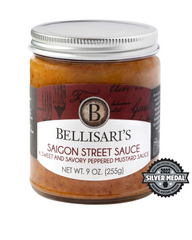
Have you ever had that happen where you’ve never even heard of something, and then once you do hear of it, you start seeing it everywhere? You see something once in a dish, and then, all of a sudden, we can’t stop coming across it on menus. This is the case with Urfa Biber (commonly referred to as Urfa pepper), a Turkish chile pepper that’s distinctive for its dark burgundy color, irregularly sized flakes, and intriguing salty-sweet-smoky-sour flavor. It’s quickly becoming a go-to ingredient for chefs across the country.
Urfa-biber has been described as tasting somewhat like what would happen if a chile pepper and a raisin had a baby or if raisins meet coffee. Known also by its Kurdish name, Isot, biber is Turkish for pepper while Urfa is a province in Turkey's southeast. A cross-border cousin to Aleppo pepper, this pepper, mild in heat, and reminiscent of raisin, chocolate, and smoke ripens to a dark maroon color on the plant.
The urfa pepper measures in at approximately 7,500 Scoville heat units and has a beautiful purple color to add to your dishes. They also have a raisin sweet note that pairs well with treats, like brownies or chocolate chip cookies. They add a nice flavor to vegetables as well as a twist to a traditional mole.
In Turkey, Urfa is traditionally used in meat dishes like kebabs and other savory preparations. You can use it as a rub for just about any type of meat, long-simmered stews, or roasted vegetables from winter roots to summer bell peppers and eggplant, or to even liven up a red pasta sauce.
Urfa biber is one of those ingredients that you don’t know you’re missing in your life until you try it. The deep purple spice has a smoky, fruity, raisin-like quality that you might recognize from Turkish lamb and eggplant dishes. Its mild flavor is reminiscent of the Mexican ancho chile but earthier, with some hints of chocolate and coffee.
Technically a red pepper, Urfa biber is ripened to a dark maroon on the plant before harvesting. The peppers are dried in the sun, but not completely so. More specifically, they go through a two-part process in which they are sun-dried during the day and wrapped tightly at night. The nocturnal wrapping process is known as sweating and helps the pepper to retain its natural oils and moisture. This gives the flakes of dried pepper a slightly chewy texture, so they’re often packed with salt to prevent caking.
Almost anything can benefit from a dash of Urfa! Its tannic, earthy profile is a nice counterbalance to sweet desserts, particularly of the chocolate variety. In Turkey, Urfa is traditionally used in meat dishes like kebabs and other savory preparations. Or simply sprinkle Urfa over any dish to which you seek to add a pleasant, subtle smoky element.
Urfa chiles are some of the best, full of smoky, sultry flavors that pair well with hearty vegetables, pungent cheeses, and braised meats. Their heat is tricky—mild at first, it builds over the course of a meal. They're perfect for when you want a dark, rich chile without the overpowering, overused punch of chipotle.
Urfa biber also takes well to other nightshades like red peppers and eggplants, especially when they're roasted. And it gives incredible depth to dairy spreads from the Mediterranean; especially those with feta.
Urfa goes so well with cheese that you can include it on cheese plates along with sweet chutneys and fruit. Its large flakes yield a satisfying, chewy texture, and its high oil content makes it far better for serving raw (without toasting or cooking in water/fat) than most chiles.
When cooking with urfa biber, you can use it as a stand-alone player, but it's so dark it works best in concert with other layered flavors. Try it with roasted root vegetables (think celeriac, parsnips, and squash) or in meaty braises and stews. An added touch of urfa brightens things up just enough.
You can also use urfa biber in desserts. Or use it in savory compotes with dried fruits and dark liqueurs. Up the stakes with some vanilla bean, whose pungent flavor and labor-intensive drying process align nicely with urfa's. You can also punch up your gingerbread spices with a pinch (add some ground coffee for good measure).
Since urfa biber only comes pre-ground, take precautions with storage. Keep it in a tightly-sealed opaque container away from light and heat, and you'll get eight months of full potency easily. Though once hard to find, urfa is making inroads to mainstream markets, thanks in large part to chef circles that are celebrating its complex character. If you can’t find it in stores, it can be ordered online from spice purveyors.
I love the idea of chocolate with a little after burn, so this brownie recipe really sounds good to me: Urfa Biber Brownies. Let us know in the comments if you’ve used this ancient, yet recently popular chile and how you’ve used it with success.
Photo credit: Linda Schneider@wildgreensandsardines.com





